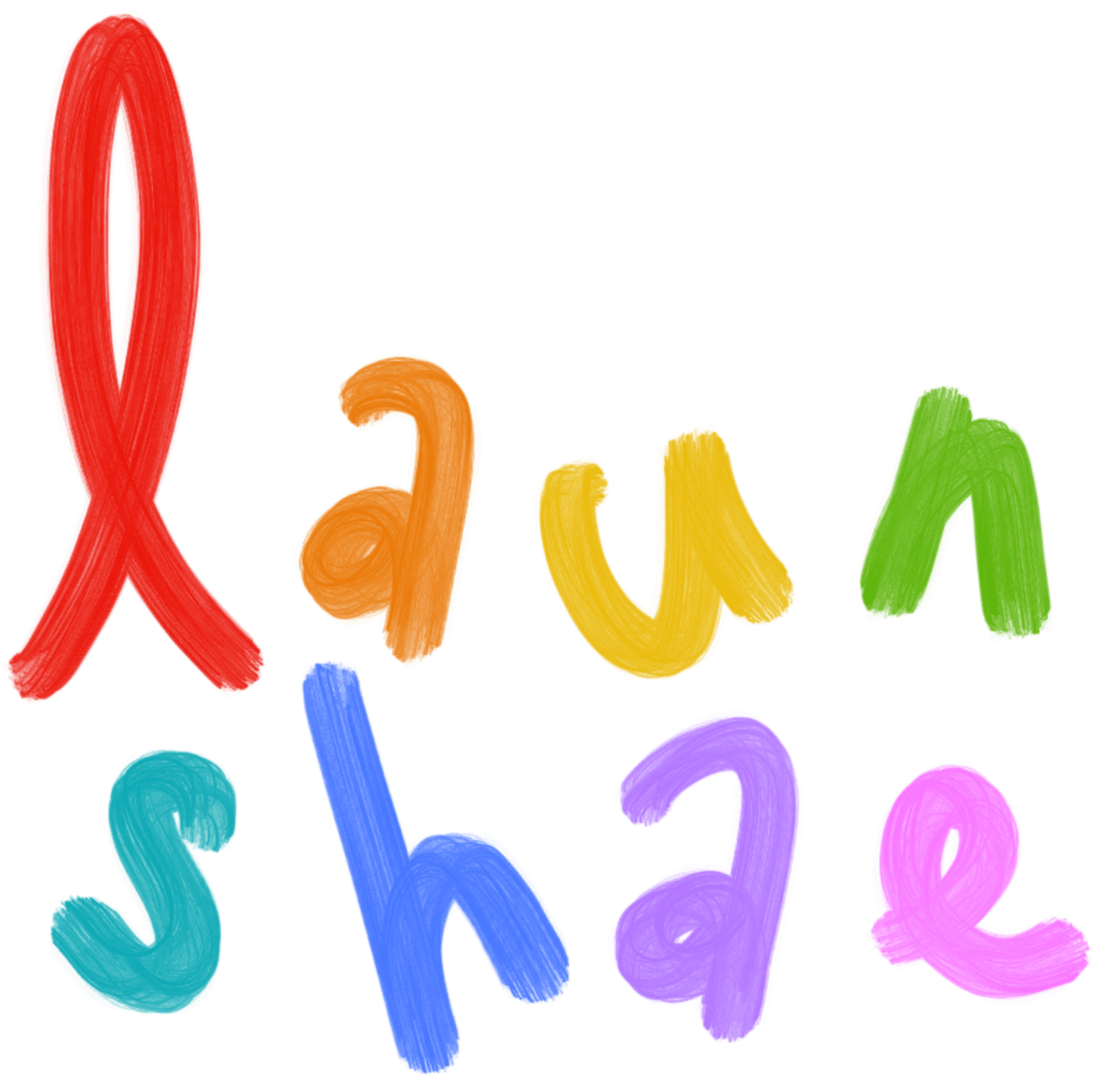In these recent years my interest has been focussed on the fiber arts—crocheting and sewing colourful garments in any possible way. I would paint or make some form of digital art now and then, but it’s been a while since I have felt inspired enough to paint consecutively.
I surprised myself at the last minute by deciding to bring along my watercolours on our trip to Hanoi, Vietnam. I was so glad I did because when we got there I realised I was looking forward to painting, like it was something my subconscious had been craving. Being transported into a new country is like waking up in a dream of a different world. There is beauty and art, new compositions and textures everywhere you look.




But what to paint? I started with this dragon fruit that was sitting inside our hotel room. It felt significant with Vietnam being the world’s largest dragon fruit exporter. Plus it was easy, accessible prey, so I went for it. I noticed that coming back to painting, I was able to try out some new techniques.
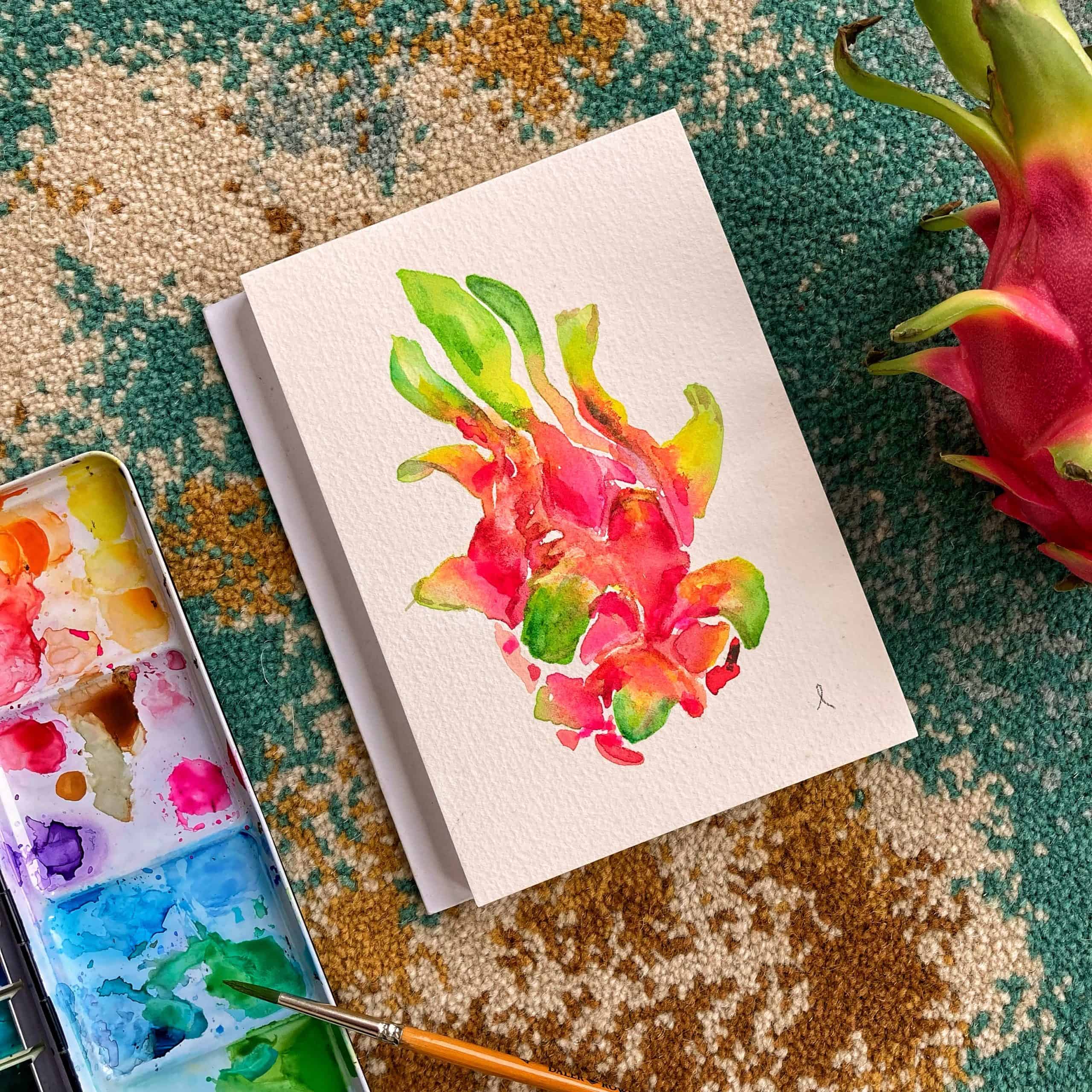
I thought the fruit could be portrayed as a dragon, or a fish, but as with most of my work, there is little planning beforehand and spaces for the eyes and feet had not been factored in. At this stage I was afraid that adding these could ruin the whole piece. The dragon fruit however already looks like it has a face, if you look closely enough.
Later on I was tickled to see some dragon fruits basking under the protection of a temple wall dragon.
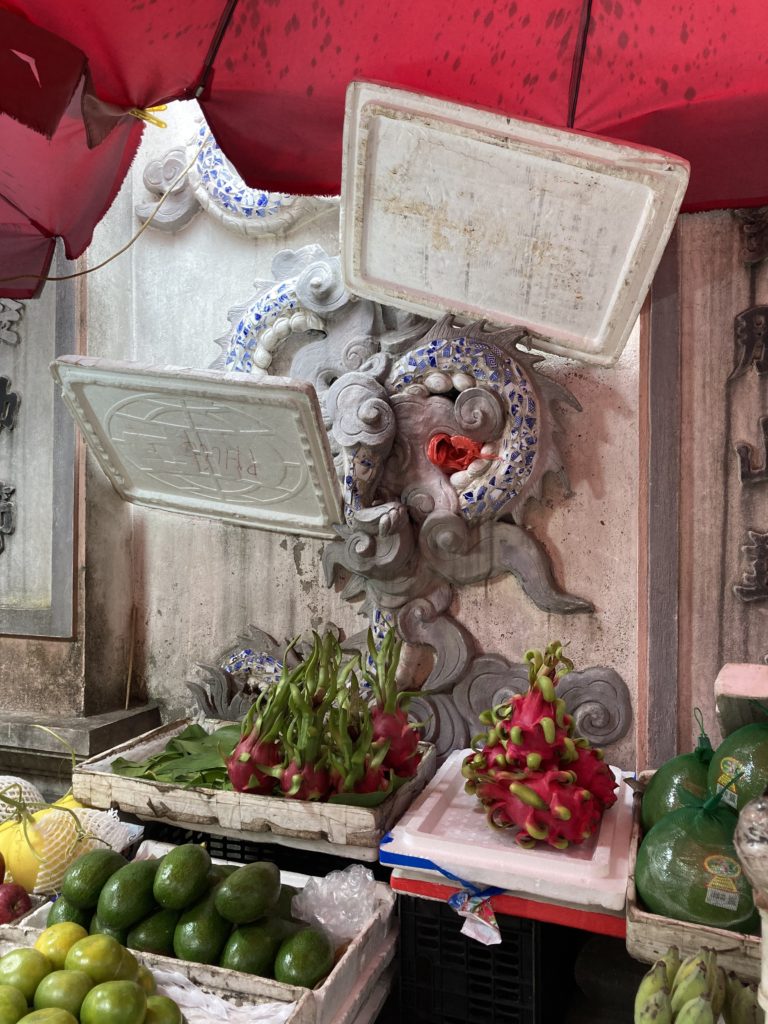
As we walked through the old quarter of Hanoi, I was intrigued by the buildings—narrow, organically spaced in all dimensions, paint peeling in the most poetic sense—textures that a movie set would aspire to recreate. The prominence of the buildings made them seem like the most obvious thing to paint, and I gave it a go. I wasn’t happy with this painting below so I didn’t take any close-up shots of it. At that moment I felt a little down and dampened for wasting time and paper, which is silly in retrospect, because expecting to nail every piece is simply unrealistic and unkind.


Picture on right shot by @wynlim
Another aspect of Hanoi that was very much in my face was the traffic. Walking along and crossing the roads was a highly immediate experience, being bombarded in all directions with stimuli while the mind is forced to juggle swarms of contending movements. And that was what I painted next, an abstraction of the traffic, a tribute and record of an unthinkable system that just works.
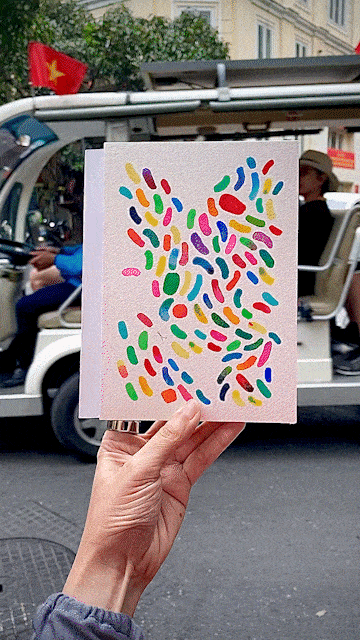
I was so amazed that I wrote this in a post:
“plunging into the sea yet emerging un-swallowed,
is this what it feels like to be part of the ocean?
where what appears to be telepathy is in fact near-instantaneous communication,
in every micro moment where the system adjusts.
unspoken it is said,
we see you, and you, and you,
two legged creatures, four legged creatures,
two wheeled creatures, four wheeled creatures,
we sense you and we move in trust,
as one giant organism of us.”
On one of those evenings, I had just read a book that my partner bought during the trip, and the laundry was strewn all over the bed, airing to dry. Was I bored at that time? For she suggested I could draw a picture of her, and so I did. I am horrified as I often am when I draw, that I don’t know how to draw. But sometimes I like that my drawings come out wonky.

On another day we just happened to walk past a beautiful gallery called WORK ROOM FOUR, and decided to pop in to take a look. On exhibit was Ouroboros by Hà Minh, an artist born in and currently living in Vietnam. I usually avoid art museums because i find the volume of work too overwhelming, but this was perfectly bite-sized and refreshing. The quirky theme and wildy explorative sketches of Hà Minh opened and liquified the boundaries of my mind. Coming out of the exhibition, I felt a new sense of liberation to freely create. Anything is possible, there are no boundaries, no rules.


I tried to look for Hà Minh on Instagram to follow her work, but the account seemed dormant and there weren’t any links to a website. This again was mind-blowing for me because in comparison, I publish everything on the socials. It made me wonder about my relationship with social media, and became one of the prompts that led me to a profound revelation—that the majority of people on social media are not my audience and I should not expect them to be. By audience I mean people who get you, and understand what you do. I was lucky enough to find a warm and supportive community in crochet, but I would not expect the majority of them to appreciate other aspects of my work. This means that while I should still continue to post my art, I should not expect resonance or even validation via these platforms. It is just a nifty way for me to share and put my work out there.


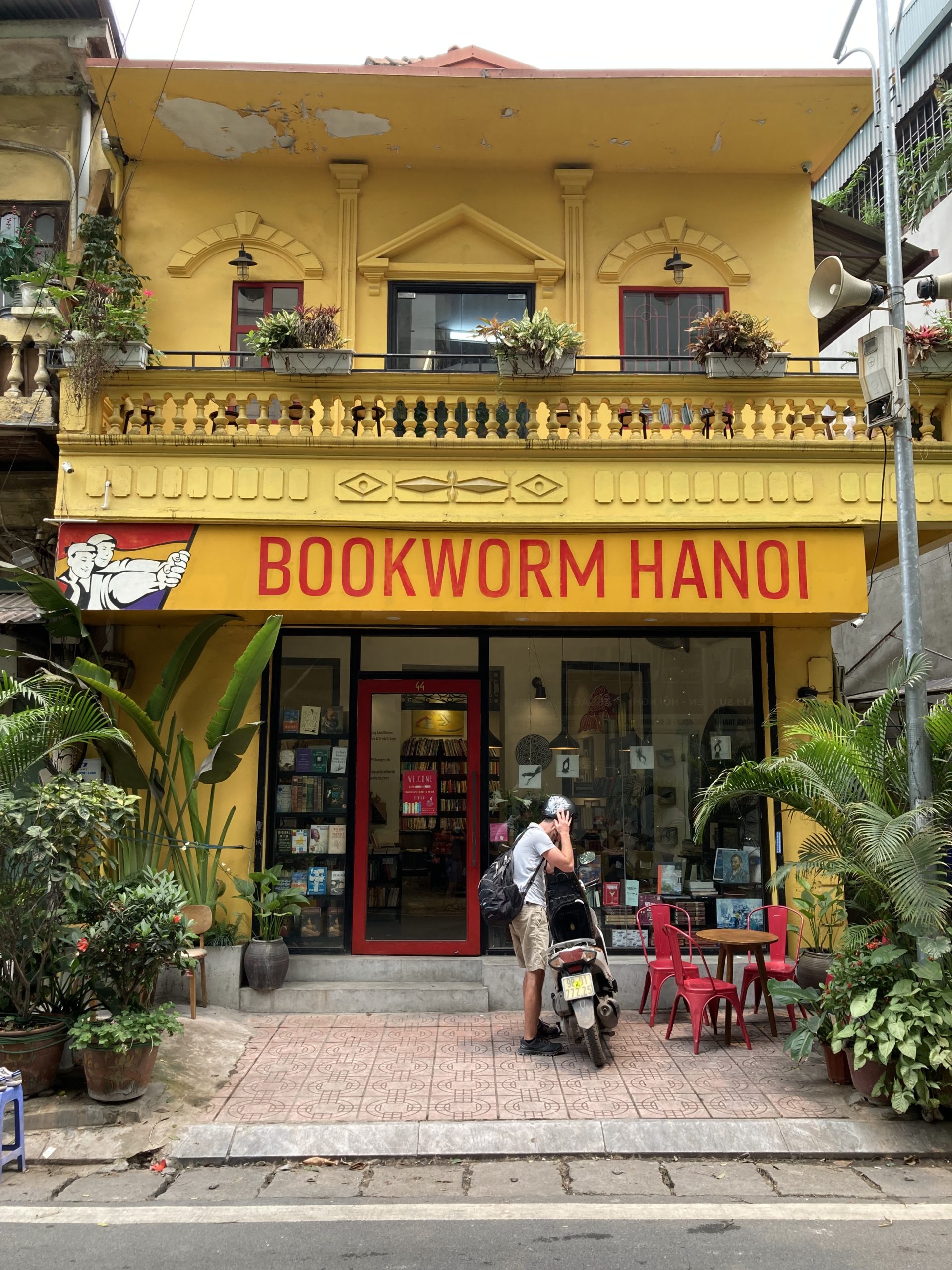
During the trip I had the idea to paint yellowness, inspired by all the yellow buildings and walls that adorn the city. I had been putting it off because the lack of subject matter and substance made it scary. How can I paint something worthy that doesn’t have a picture in it? There is sometimes the temptation to display some degree of skill, because you know that’s what people are able to appreciate. Witnessing the art of Hà Minh certainly gave me courage. Also my partner Winnie is always encouraging when it comes to these things,
“It is precious to have an idea, ideas don’t come easy and you should cherish them. Also what’s the worst that can happen?” she said.
“Waste a sheet of good paper,” was my reply.
“I’ll buy you 10 new books for every sheet that you waste.”
“Omg.”
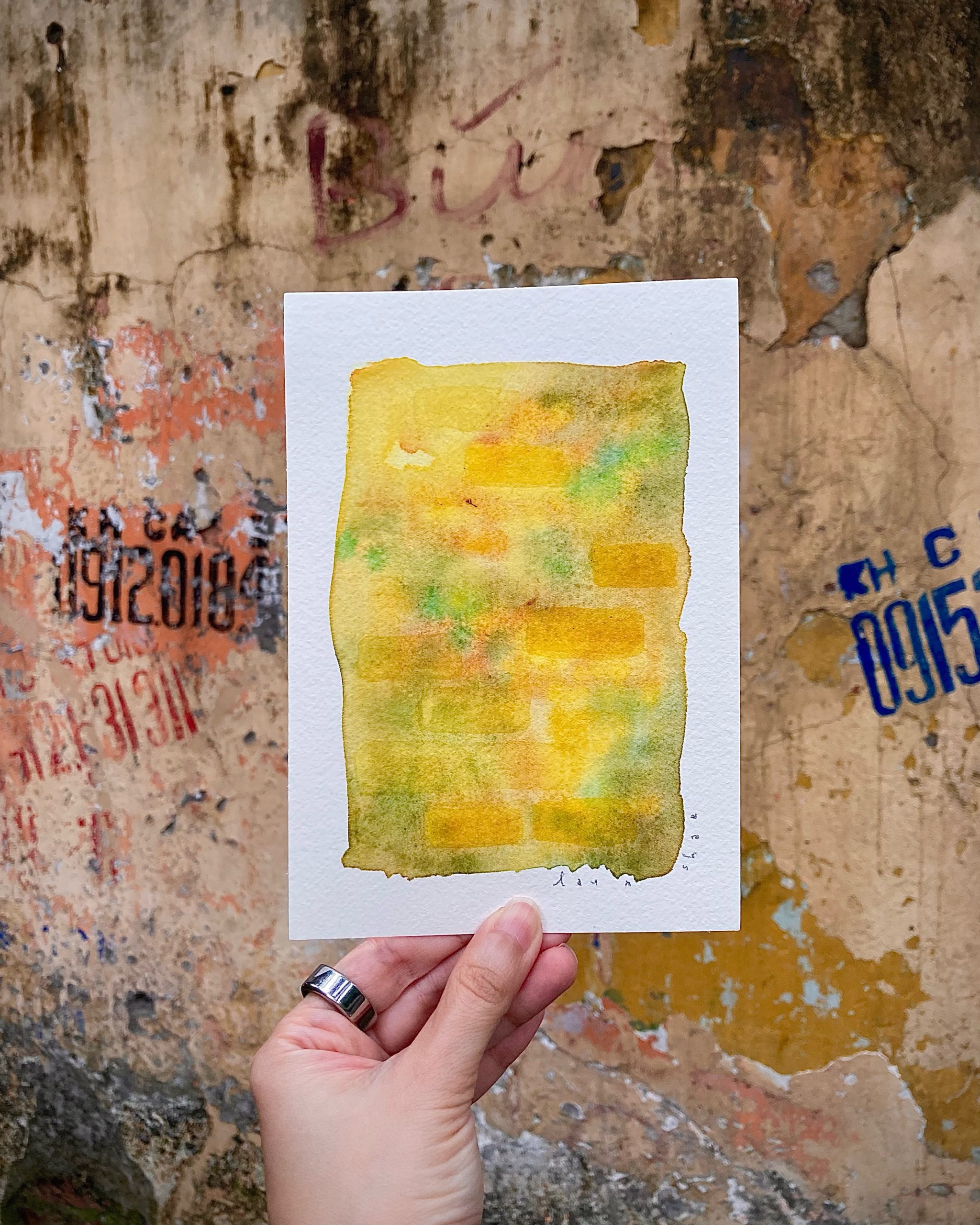
One of the great privileges during our trip in Hanoi was getting some customised stamps made by the master artisan of Phúc Lợi Stamps. We awkwardly tried to communicate what we wanted and not knowing what to expect, I was surprised, in awe and very much grateful when we received our stamps. Through Phúc Lợi we also discovered the wonderful work of Vietnam-based woodblock printmaking artist Jack Clayton, who made beautiful woodcut prints inspired by this shop.
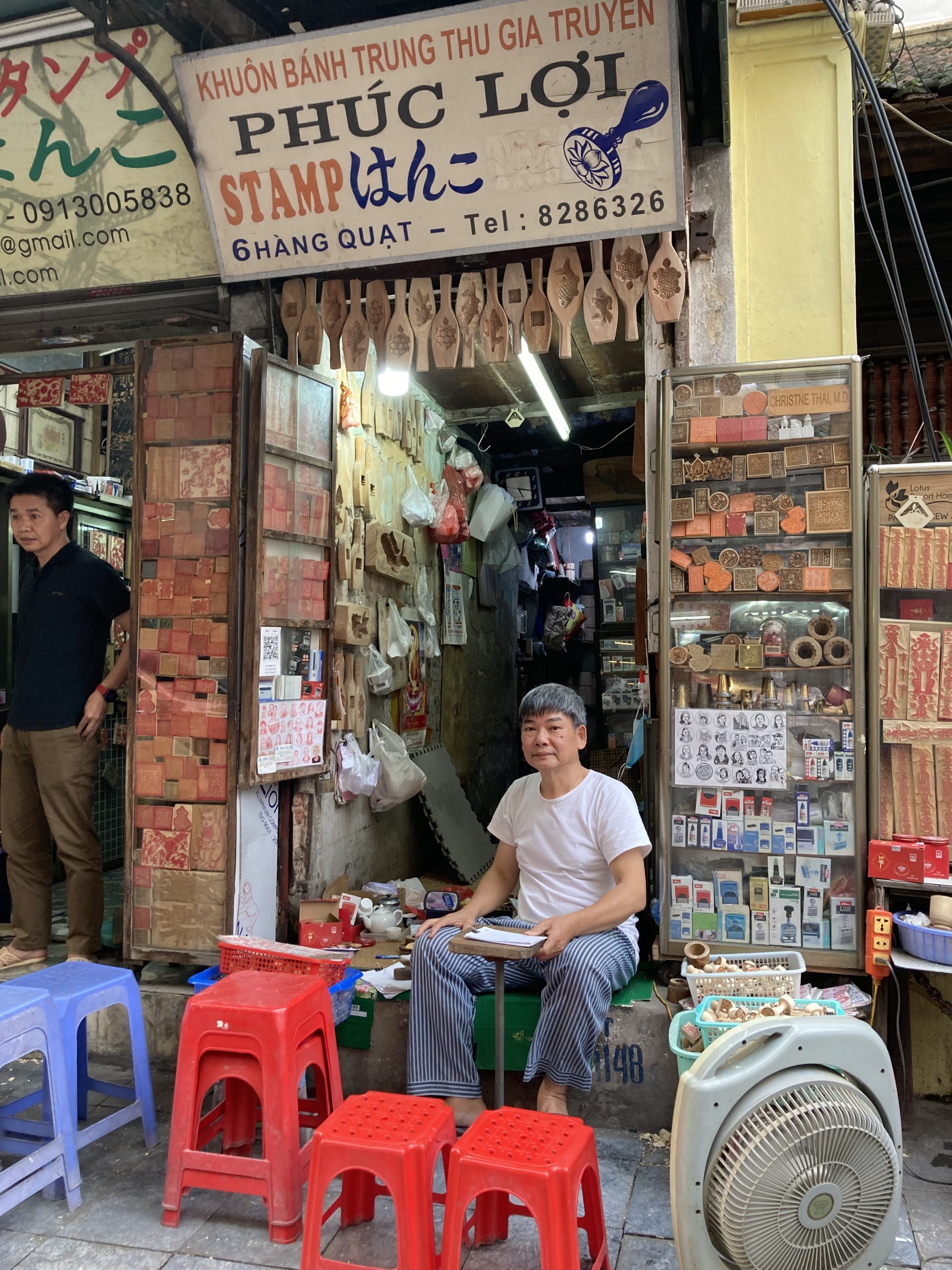
I used one of the stamps made in this painting below. To me this is a collaborative piece of art made between the stamp maker and myself. I like that I wasn’t thinking much but just had fun freely stamping away, and then filling in more shapes and colours.
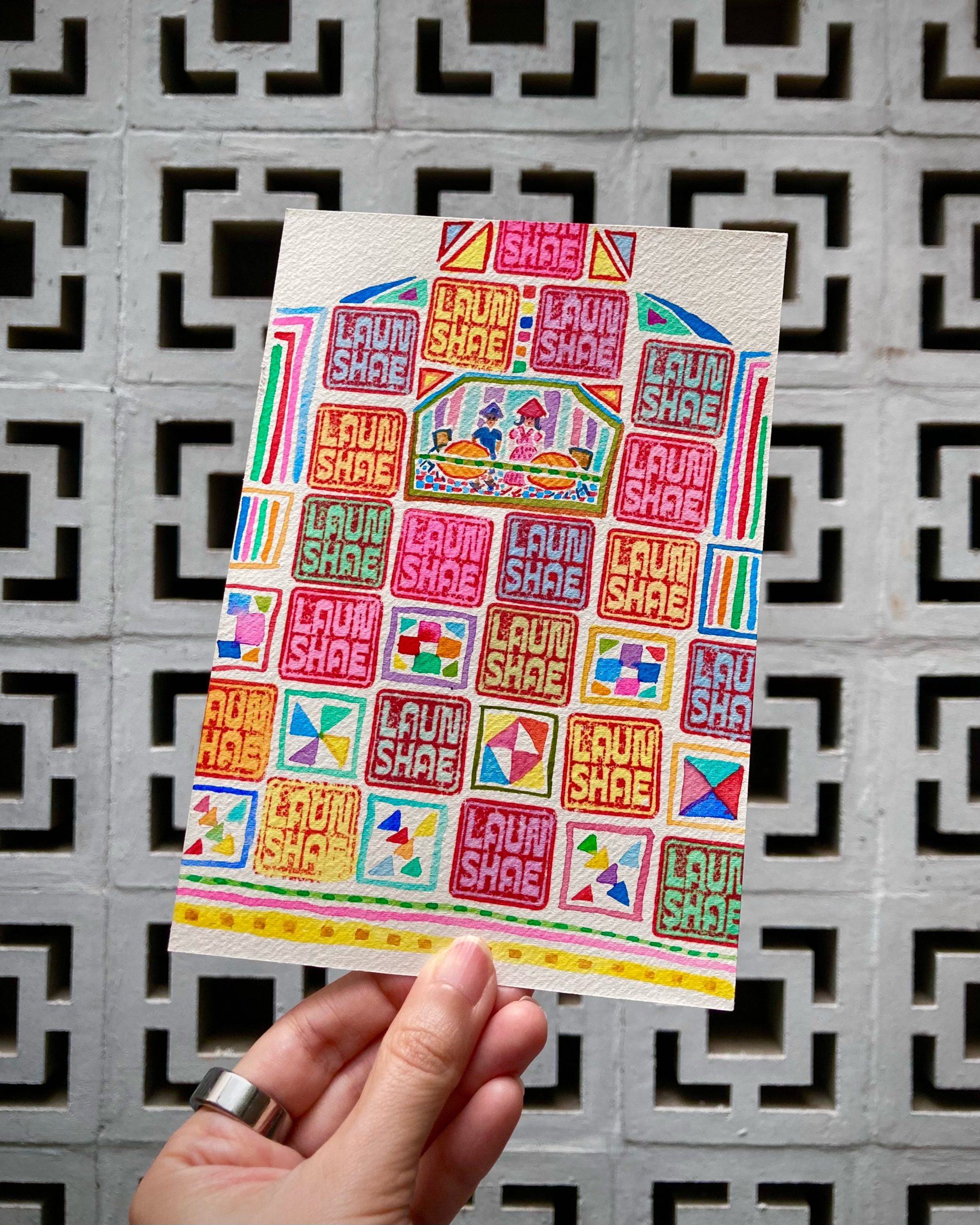
The patterns in this painting are inspired by the fascinating traditional textile art of local ethnic groups. Visiting the exhibition at the Vietnamese Women’s Museum made me realise how we are all connected across time and space, in our love for colours and geometric patterns. The same thing can be seen over and over again whether in the outfits of ethnic tribes or crochet pattern making.
In the painting, these patterns have then been arranged into the shape of a building, inspired by the old charm of the Hanoian architecture that litters the streets.
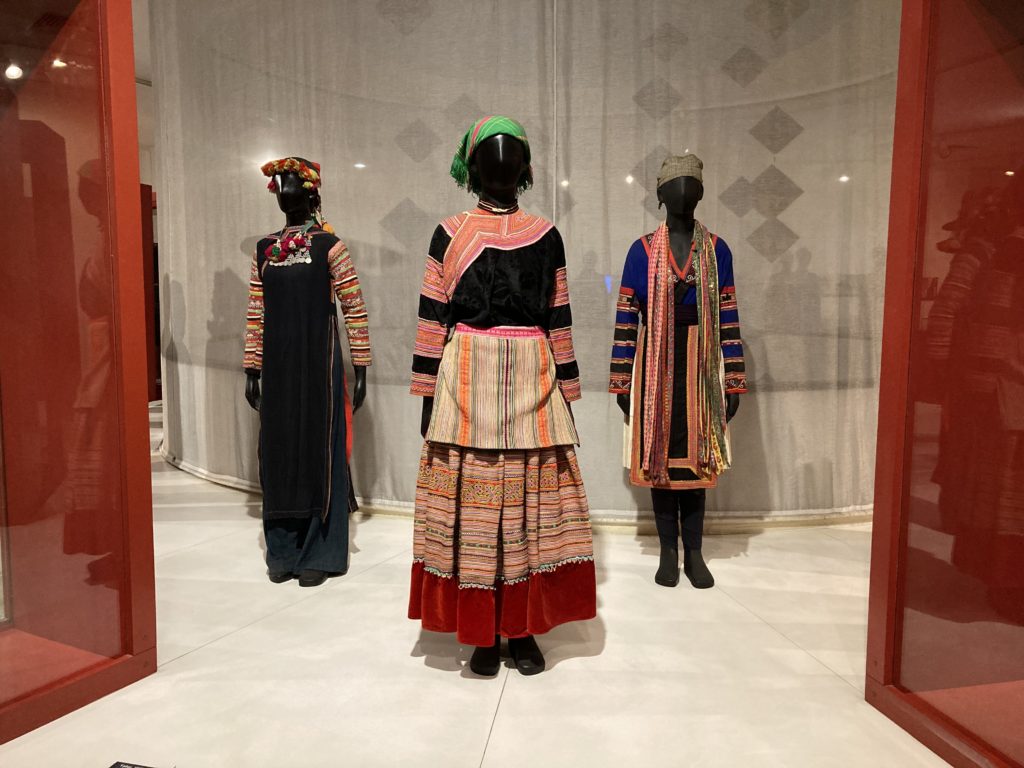
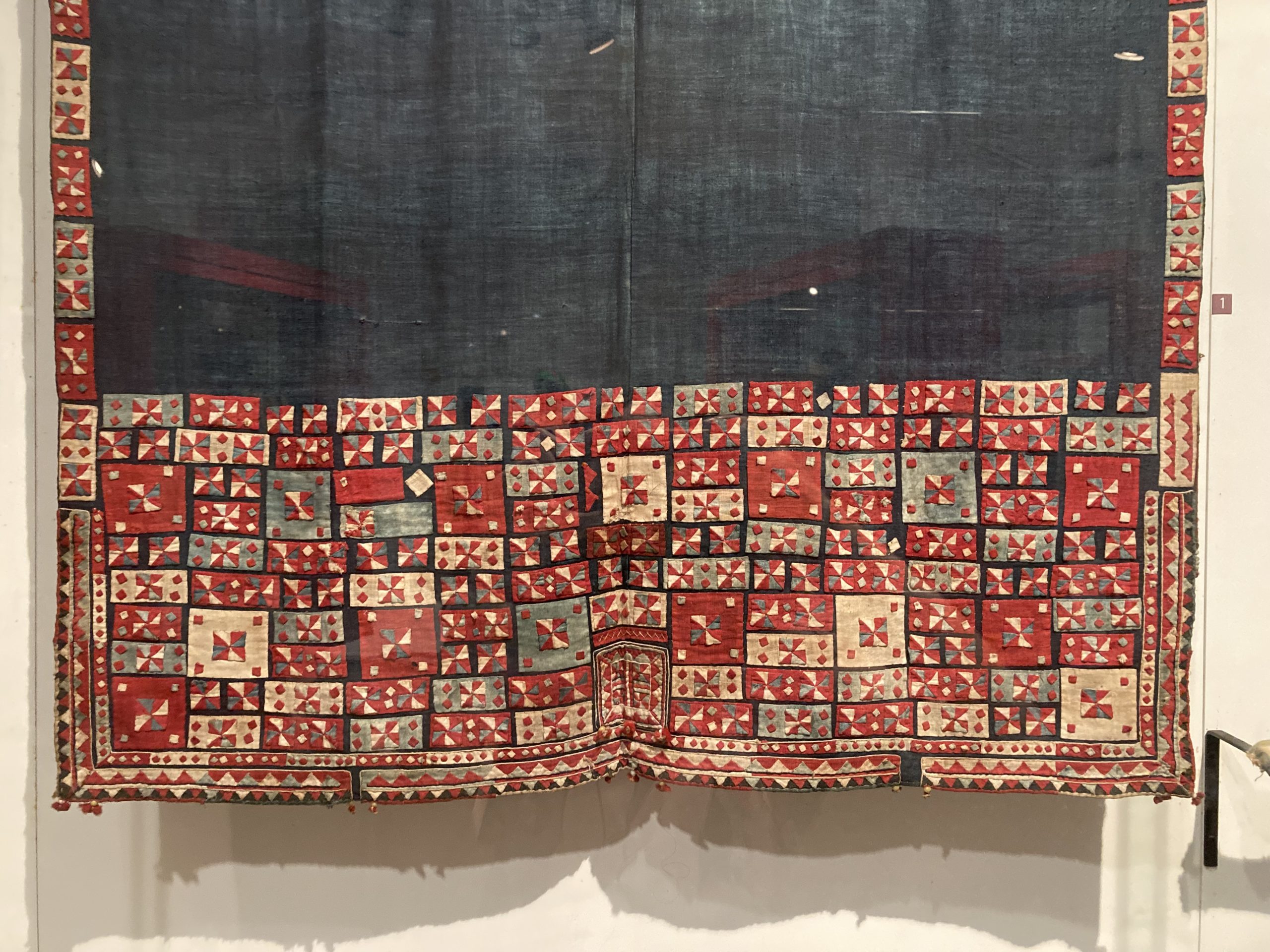
There was a gentle drizzle going on for a couple of days while we were in Hanoi, coating the pavements and roads with a thin film of perpetual mud water. This plus my discovery that I am very good at splattering mud onto my own legs were what inspired the next painting.


Coincidentally the water soluble pencil I used in this painting expressed the exact colour and fluidity of the mud. It was magical when brushing on water, to see the mud release and flow across the paper terrain. (Pencil: Caran D’ache Technalo Water Soluble Graphite Pencils RGB Red)
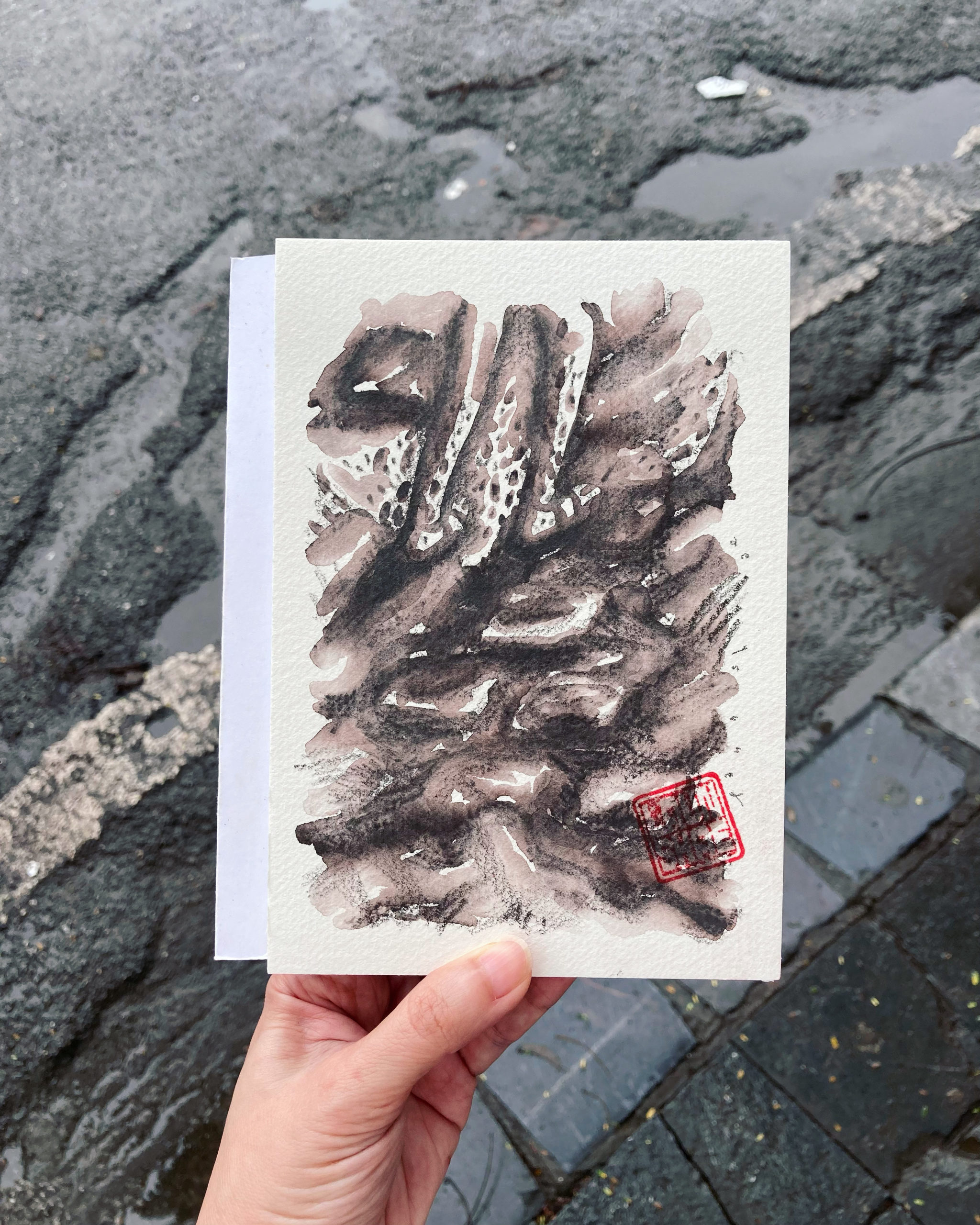
Alongside the mud, on the same streets can be seen all sorts of cleaning taking place throughout the day. There is the washing of vegetables, cooking utensils, shop floors, the non-stop sweeping of leaves by shopkeepers and the subsequent rounding up of leaves by mobile garbage collectors. Almost as if a city that is a cat, is incessantly licking itself clean.
We visit another cool gallery, Manzi Art Space and Cafe, thanks to the recommendation of Ben Puah. I loved seeing the art, and I noticed I was drawn to pieces full of breathing spaces and where the subject was barely visible, such as a floating body painted so closely to the background that you can barely see it there. These were beautiful and comforting to be in the presence of.



I also set up my own mini art gallery wherever we went, to design a fun and creative space.
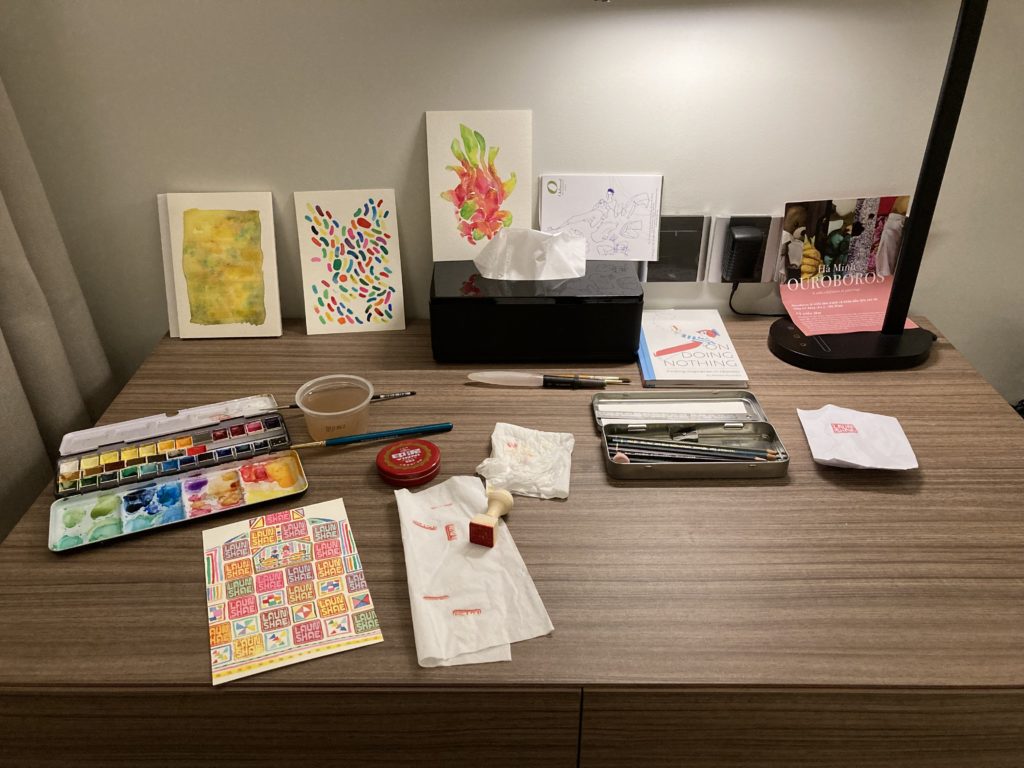
And then came the last of the series, a re-attempt at painting the cityscape. This time I sketched the scene in pencil first before filling in the colours. This worked much better for me because without the sketch I got lost with what is where. Also in this painting below, another of the beautiful carved stamps can be seen. This version has my Chinese name written in old Chinese.
"Here the forest of buildings are narrow and dense, they compete for sunlight, and seem to branch into any free space that may be found. Beneath its canopies on the forest floors, space is equally limited so tables, chairs and dogs are miniaturised. There is a place made for everything and everything seems to coexist."—As written in my post
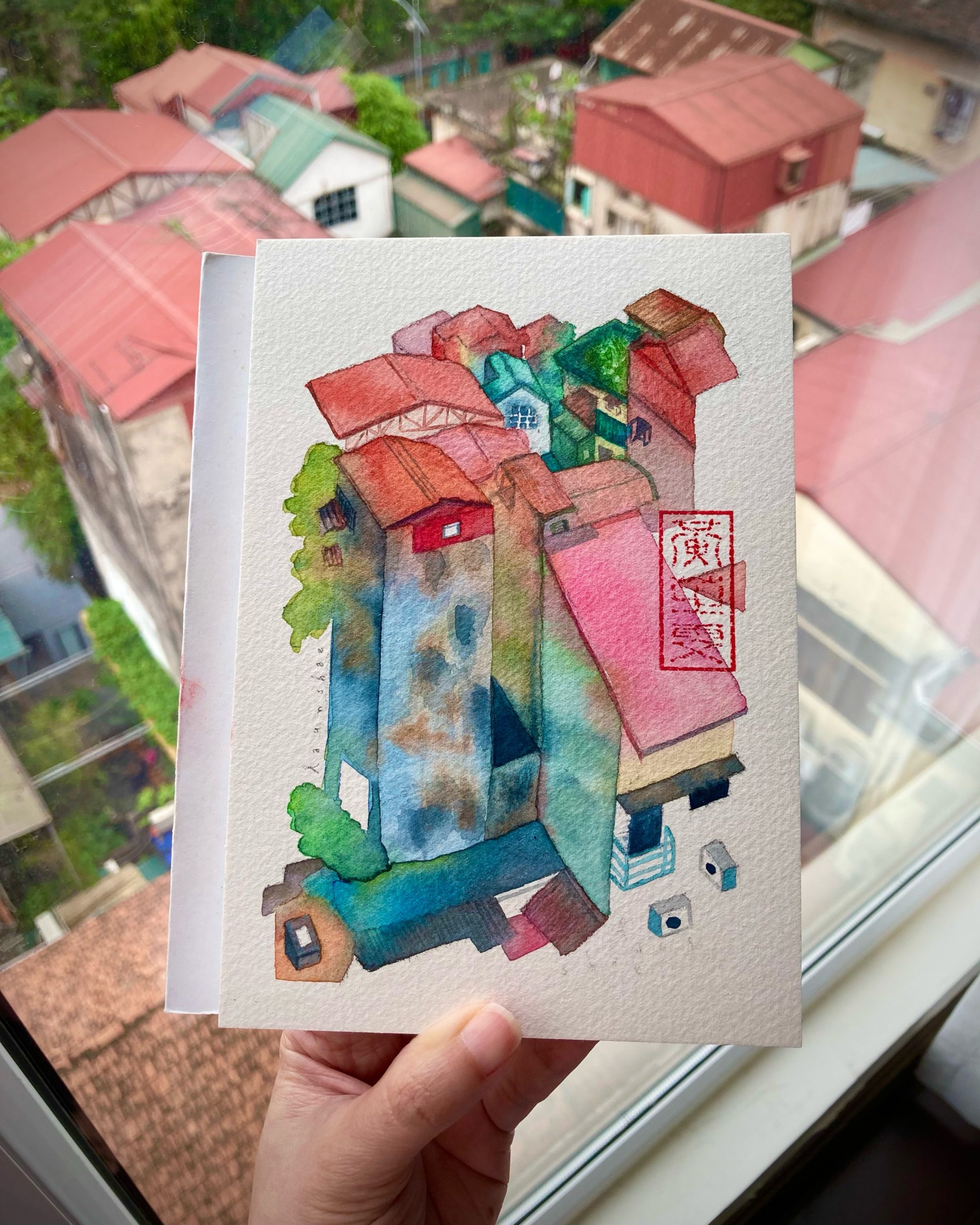
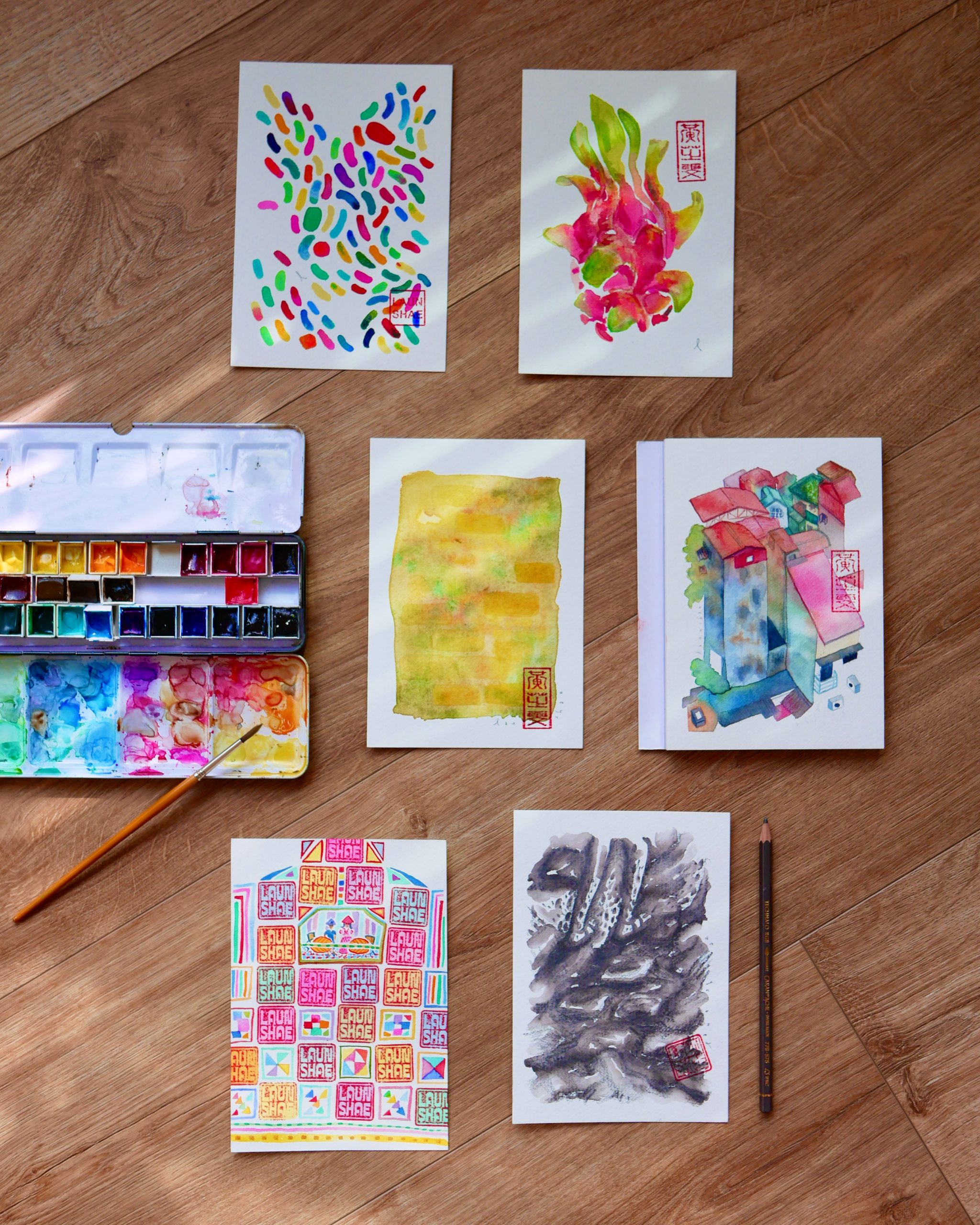
When I look at this series of paintings, it intrigues me that every piece is so different in style. Although what can be said to hold them together is the use of watercolours and the same paper stock. I seem to be highly averse to repetition, to doing the same thing again, not even one more time. I think this is why I am rarely able to create what is conventionally thought of as a series. Perhaps I like to skip and jump because somewhere inside me I know the world is too big to simply walk across.
I started writing this essay once we got back from Hanoi, but we had a covid episode and I only resumed working on this some two weeks later. I rarely miss anything, but in the time that passed I found myself missing Hanoi. Was it because I had an epiphany while we were there? Or that Hanoi felt real whereas returning to Singapore made me realise that Singapore doesn’t feel real? With the latter is it because of the way our buildings look so neat and sterile? Is it that the organic Hanoian cityscape and way of life feels closer to the way of nature? In Hanoi my senses are confronted at every moment even if i’m just walking from point A to B on a sidewalk, while back home there is comfort, straight sheltered paths, and manufactured dullness in our spaces and people. That contrast—is that what makes me feel more alive and therefore more real in Hanoi?
I felt palpably inspired when I was there too, and wonder how I can continue to feel inspired now that I am back. Where should inspiration come from? How can creativity and authenticity become a practiced way of life? Life for me is a fortuitous blank slate for now so these are things I’ll be thinking about. If I am able to navigate life like how I navigate the traffic in Hanoi, I think I’ll have a better chance of getting where I need to go.
